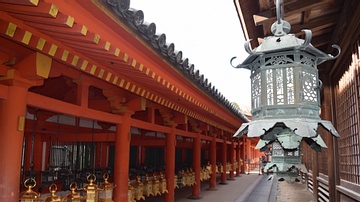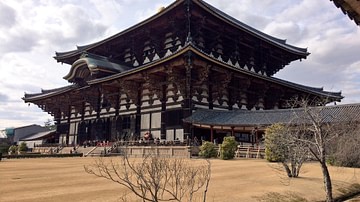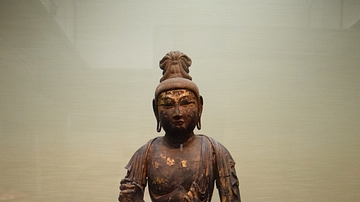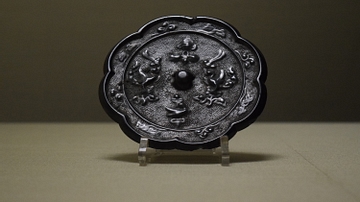Search Images
Browse Content (p. 1311)

Image
Torii, Kasuga Taisha
Torii or sacred gate at the Kasuga Taisha Shinto shrine, Nara, Japan. Founded in 768 CE (or 710 CE) during the Nara period.

Image
Stone Lanterns, Kasuga Shrine
Stone votive lanterns at the Kasuga Taisha Shinto shrine, Nara, Japan. Founded in 768 CE (or 710 CE) during the Nara period.

Image
Apis Bull
Life-size basalt statue of the Apis Bull dedicated by Hadrian to Serapis in Alexandria (Egypt), Osiris, Sunken Mysteries of Egypt exhibition, Paris (2015)

Image
Kasuga Taisha Shrine, Nara
Votive lanterns at the Kasuga Taisha Shinto shrine, Nara, Japan. Founded in 768 CE (or 710 CE) during the Nara period.

Image
Buddha, Todaiji Temple
The huge bronze Buddha in the Daibutsuden or Great Buddha Hall at the Todaiji temple complex, Nara, Japan. c. 752 CE, Nara Period. Height: 15 metres (49 ft.).

Image
Daibutsuden, Todaiji
The Daibutsuden or Great Buddha Hall of the Todaiji temple complex, Nara, Japan. First built in the 8th century CE, the building today was built in the middle of the Edo Period (1603-1867 CE).

Image
Great Buddha Hall, Todaiji
The Daibutsuden or Great Buddha Hall of the Todaiji temple complex, Nara, Japan. First built in the 8th century CE, the building today was built in the middle of the Edo Period (1603-1867 CE).

Image
Sanage Ware, Nara Period.
A Japanese sanage ware jug with natural glaze. Nara Period, 8th century CE. (Tokyo National Museum)

Image
Nikko Bosatsu
A seated Nikko Bosatsu (Suryaprabha). Lacquered wood with gilding. Nara Period, 8th century CE. Important Cultural Property. (Tokyo National Museum)

Image
Nara Period Mirror
An eight-lobed cast bronze mirror with flowers and luan (a mythical bird) decoration. From Mount Tsuwado, Mukuno, Yamaga-machi, Kitsuki-shi, Oita, Japan. Nara Period, 8th century CE. Tokyo National Museum)